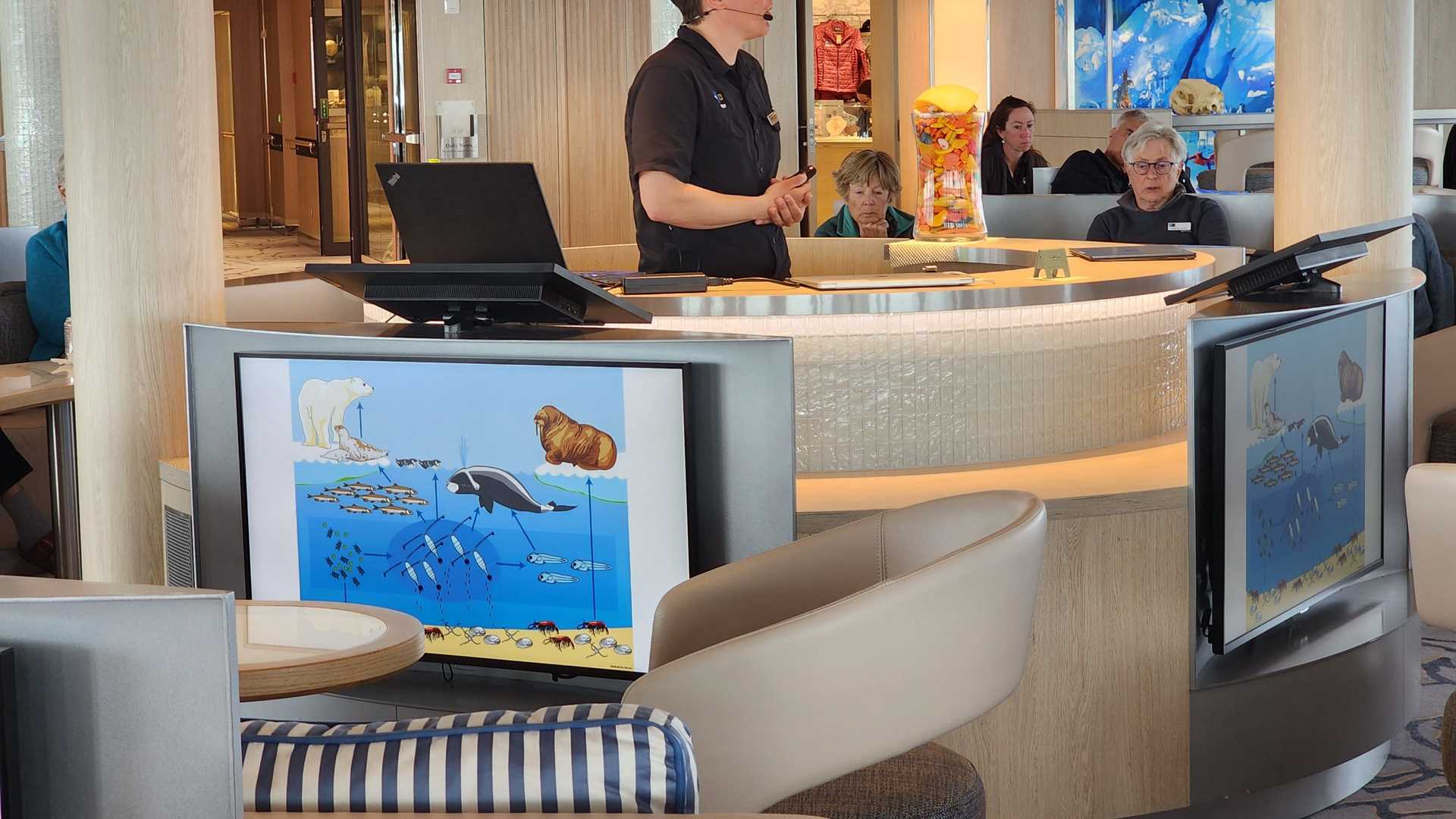After the excitement of our previous evening’s whale watching, we left the shallow waters of the Barents Sea for the deep waters of the North Atlantic and began to make our way towards Jan Mayen Island. As the morning progressed, we became enveloped in fog which stayed with us for the rest of the day.
The morning included presentations from our naturalist staff. Jackie gave us a Polar Bear 101, and Kerstin told us about plastic in the Arctic Ocean. After lunch, we had a lively panel discussion about climate change. At the end of the day, we had our traditional recap, during which photo instructor Jeff introduced the collection of plastic we found on the beach at Bear Island.
After dinner, Captain Martin gave us a presentation about the design and build of our wonderful expedition ship. Captain Martin has been involved in the design and building of both National Geographic Endurance and National Geographic Resolution and was able to explain all the special features of these expedition vessels.







